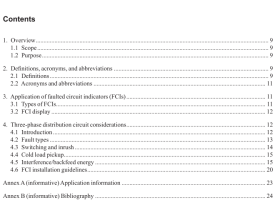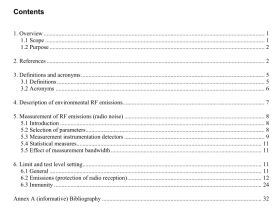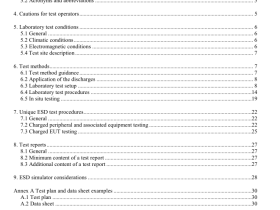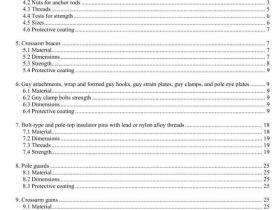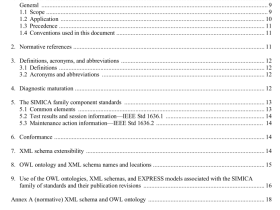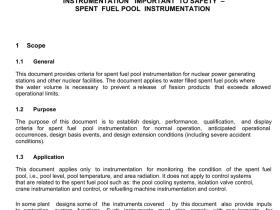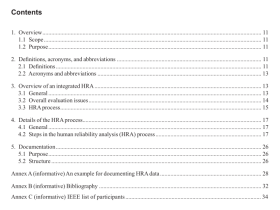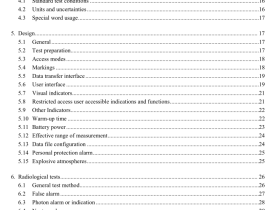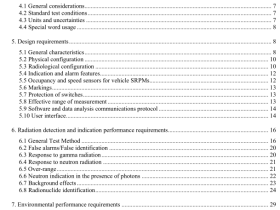IEEE Std 2411 pdf download
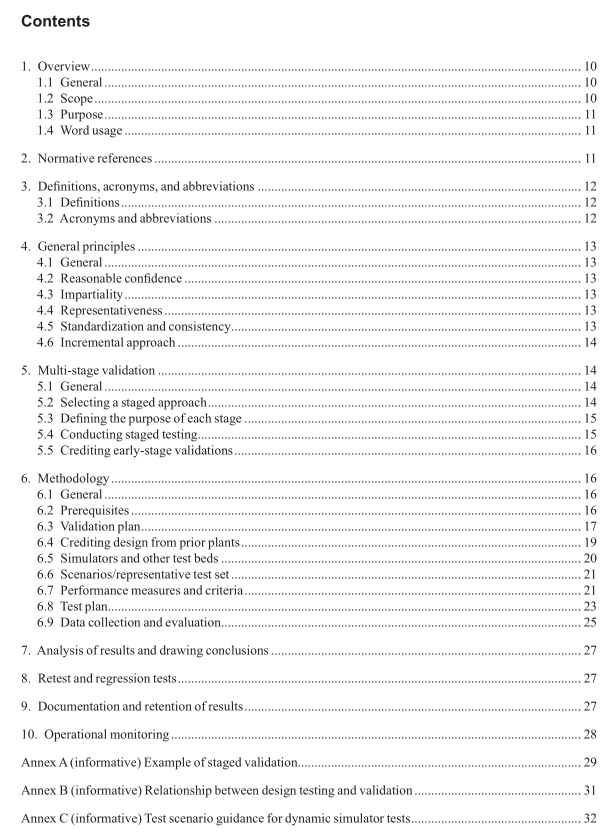
IEEE Std 2411 pdf download IEEE Guide for Human Factors Engineering for the Validaton of System Designs and Integrated Systems Operatons at Nuclear Facilites
4. General principles
4.1 General The general principles described in 4.2 through 4.6 provide high-level guidance for validation activities. These principles are the basis for an objective, systematic approach to HFE validation. Clause 5 and Clause 6 provide detailed guidance for conducting HFE validations consistent with these general principles.
4.2 Reasonable confdence The general purpose of a validation effort is to establish reasonable confidence that a system can be safely operated by personnel during all conditions under which it is expected to operate during its lifetime. Reasonable confidence is the standard of proof applied when reaching formal validation judgments. Validation testing cannot prove a component or system is safe under all conditions, but it can provide a basis for reasonable confidence. Successful validation gives formal grounds, as needed, to allow the system to proceed to the next stage in development, implementation, or use.
4.3 Impartiality Validation should be performed impartially to fairly evaluate the design with no predisposition toward favorable or unfavorable outcomes. The validation team and participants in validation tests should have independence from the design team. Criteria should be established during test preparation and planning. Validation conclusions should be based on considering all criteria and results, both favorable and unfavorable, and factors that may have compromised the tests. The basis for the conclusions should be able to be scrutinized by third party review.
4.4 Representativeness Validation of a system depends on selecting test scenarios that provide a sound basis for inferring how the system will work in real-world operation. Although validation testing need not be exhaustive to be representative, aspects of the design important to safety should be tested under the full range of conditions anticipated during actual use, including off-normal and emergency operational conditions. Similarly, participants in validation tests should be representative of the intended user population of operators and plant staff in all characteristics considered to substantively affect performance. Validations are typically conducted using a representation of the design (i.e., a testbed such as a simulator) rather than the actual system to be validated. The accuracy of this representation should be suffcient to support the objectives of the validation activity for which the testbed is to be used. Additionally, the testbed should be representative of the design at its level of maturity at the time of the validation test. In general, validation tests should be carried out after the design has been successfully verifed using HFE, technical, and functional requirements to ensure that the correct design is validated. The validation test objectives should guide the level of fdelity needed between the testbed and the design, and should refect which aspects of the design fdelity are of greater or lesser importance.
4.5 Standardization and consistency The test methods and procedures should be well defined, so that they can be consistently applied and maintained. This includes training of participants; training of test team members; participant briefings; instructions for conducting scenario test trials; performance measure administration; treatment of data; participant debriefings after the testing; and documentation of results and conclusions. Standardization and consistency help to ensure the integrity of the validation process and results.
4.6 Incremental approach The risk of identifying design issues and their rework late in a project may be reduced by validating system or component design elements as early as practical in the design process. For a specific project, the overall span of validation activities and the number of stages to be used are determined by the project team. Although this guide does not advocate a specific number or sequence of validation stages, the plan for each stage of validation tests should state its particular scope and objectives.
